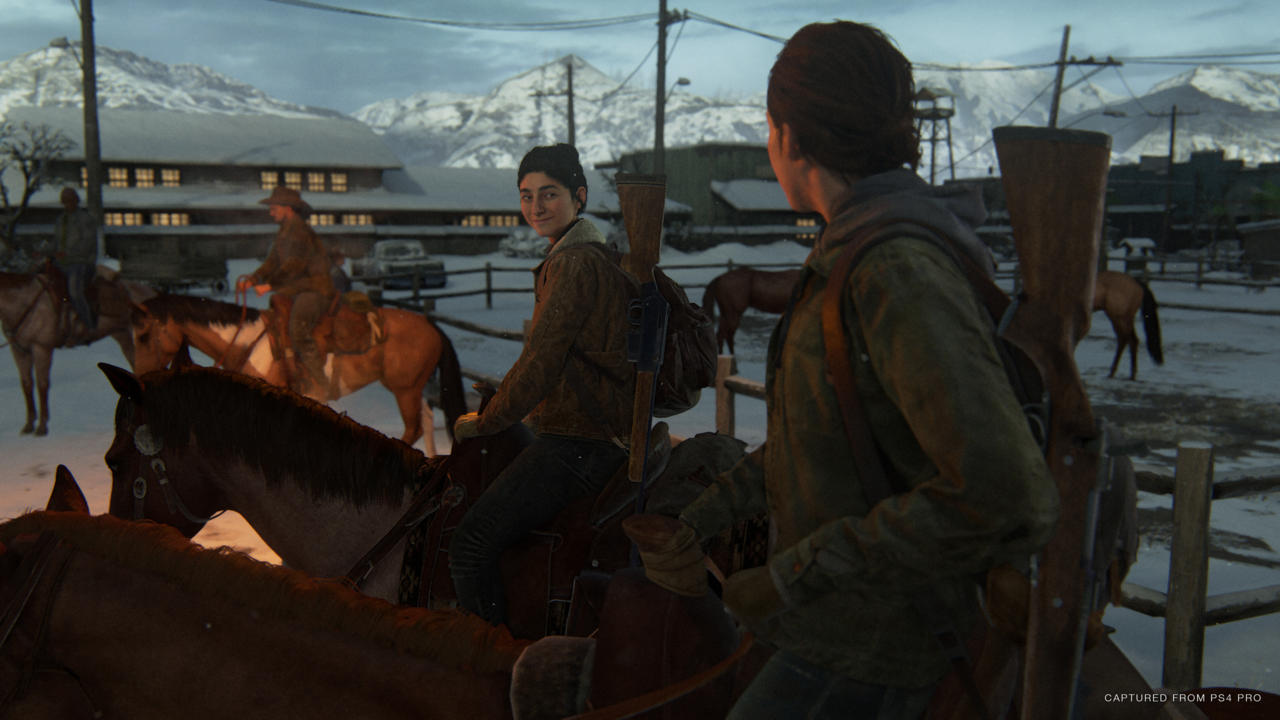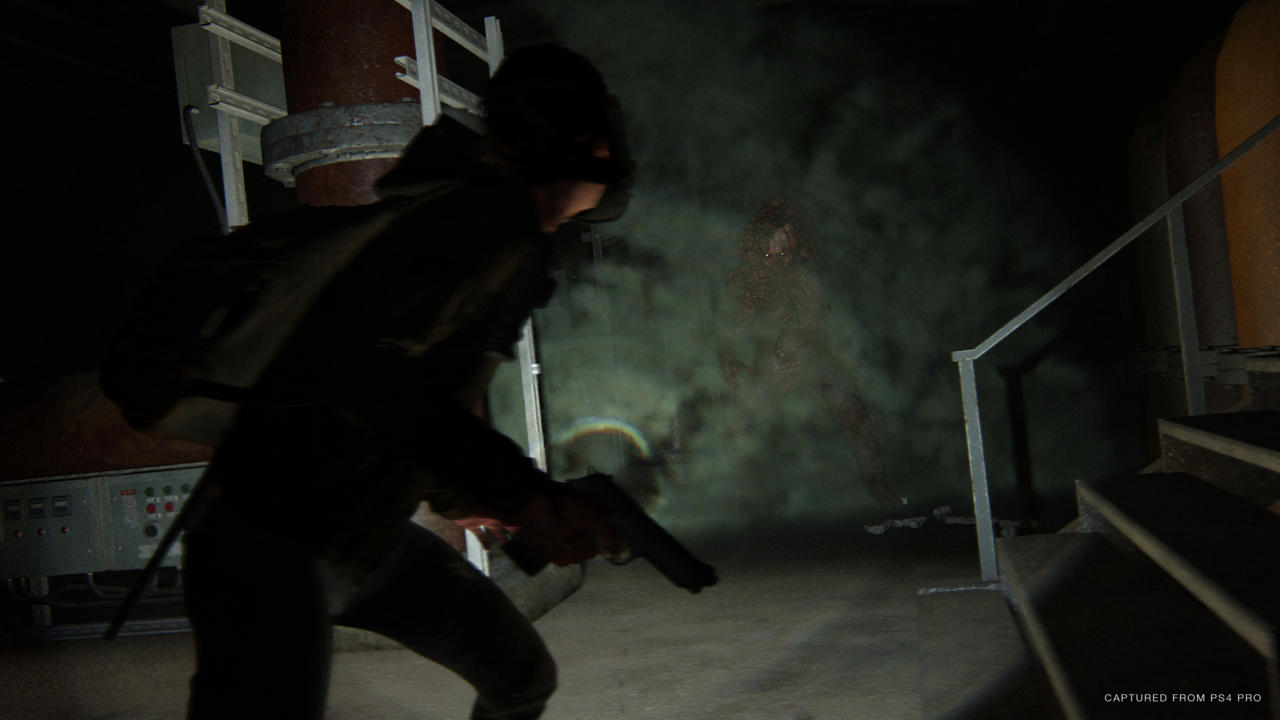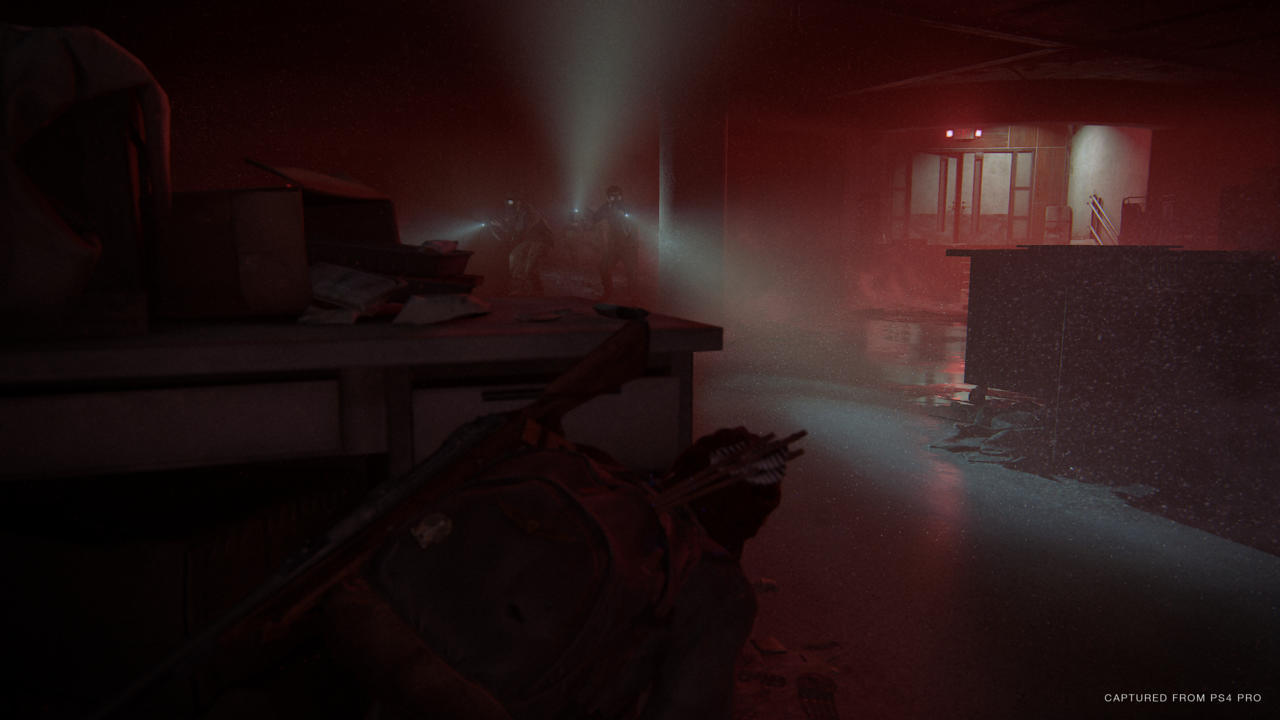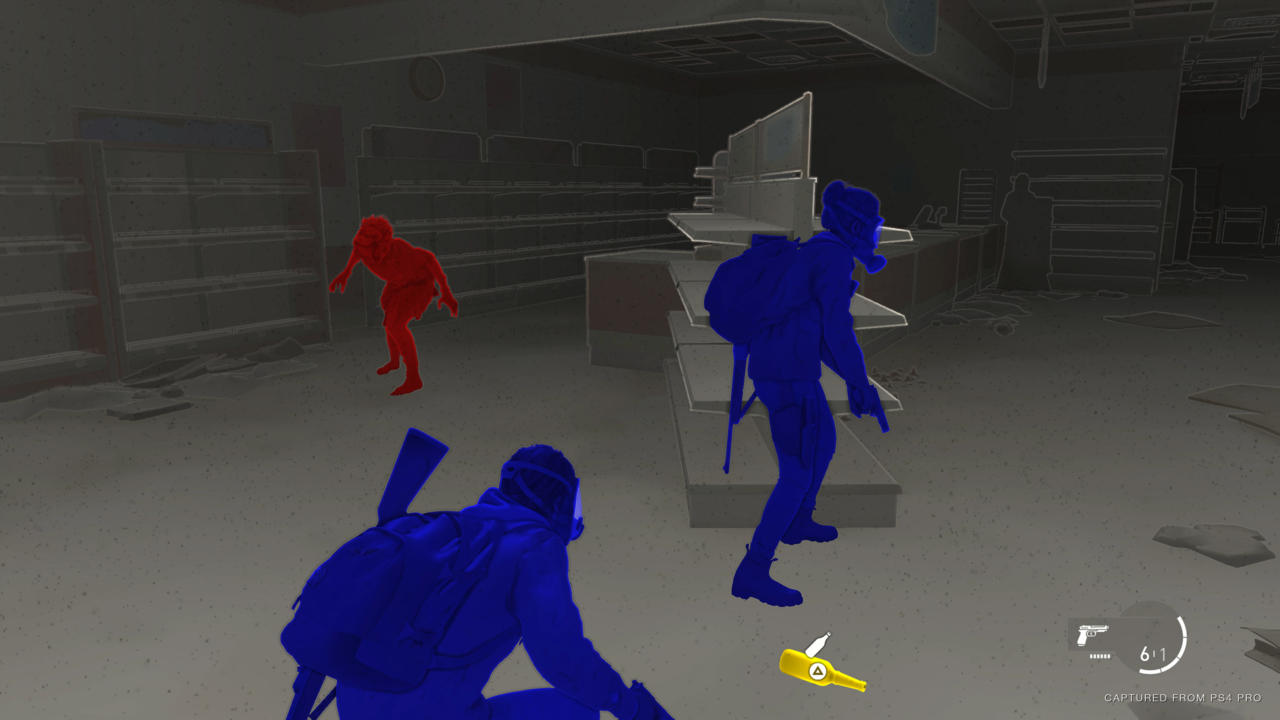Editor's note: Due to embargo restrictions around spoilers, parts of this review are intentionally vague. We've done our best to explain certain parts of the game and our critique without discussing any story spoilers; however, if you want to understand the full context of our analysis here, you can read the spoilery version of this review, which discusses the story in greater detail and further explains our thoughts. That review has the same score and just serves as a deeper, more detailed analysis for those who want to read more.
At the beginning of The Last of Us Part II, you get a glimpse of Ellie's life in idyllic Jackson, Wyoming. If it weren't for the walls surrounding the town, you could almost forget that the world is crawling with infectious monsters that would kill everyone in sight; its main road, blanketed in snow, is a charming row of old buildings with decks for sidewalks, more Old West town than post-apocalypse settlement. Its residents grow food, care for horses, tend bars, and even have dances and movie nights. Four years after Joel saved (kidnapped?) Ellie from the Firefly hospital, this is the life he wanted for her.
The Last of Us Part II grapples with Joel's decision not through Joel, but through Ellie. This life is clearly not enough for her; she's distant and brooding, obviously conflicted about something. She's changed a lot. And when everything falls apart and she sets out in search of vengeance, you see her pain in its rawest, most brutal form. It's a devastating, gruesome story of revenge in which the purpose of violence gets muddied by its intensity. But as a character study, The Last of Us Part II is beautiful and haunting, and I found myself completely overwhelmed by the emotional weight of it.
In some ways, I mean that literally. The game gave me stress nightmares, not because you kill a lot of people per se, but because playing as Ellie felt more like being dragged by my hair than being immersed in her mission. From the very beginning, I wanted to reach out and shake Ellie, as her proxy in all this, and get her to do anything other than what we were about to do. I knew her revenge quest was bad news before the killing and maiming really began.
There are narrative reasons for that, though, and they do work. Being helpless as a player in the face of Ellie's destruction serves a grander purpose that I won't spoil here. The biggest issue is that the most impactful of her kills occur in cutscenes rather than in combat, and that obscures the purpose of combat's more upsetting aspects.

The Last of Us Part II's combat is tense and exhilarating, though confronting in its brutality. Ellie is scrappy and agile, and moving through a combat arena is an art. Her movements are smooth enough that they almost look scripted; you can duck and dodge in a fight and deliver a return blow with a series of button presses that translate into a strangely graceful dance. You can accidentally alert an enemy to your presence only to slip through a tight space in the wall, vault through a window, and outrun your pursuer through a building to reestablish your cover and gain the upper hand. You can also easily get surrounded and die horribly, whether you're fighting people or infected.
Navigating any given combat scenario is a puzzle in which you have to figure out exactly how to get from point A to point B with the resources you have. I'm partial to stealth when possible, and it's especially rewarding to decide how you're going to silently kill each enemy with only a flimsy silencer, two arrows, and your default knife. Should you kill the blind clickers first because they're strong and deadly, or should you kill the infected runners first because they can see you? Can you retrieve an arrow from a corpse to be reused on their friend? Most importantly, where's the exit?

You can also find yourself going up against both humans and infected at the same time, and this is when combat is properly fun instead of just tense. By throwing a bottle, you can draw a clicker toward an enemy soldier and simply wait for them to kill each other. You can shoot glass above an enemy's head to send a runner or two straight to their location. You can simply take advantage of the chaos and start shooting indiscriminately. Regardless, it makes you feel clever and giddy and weirdly proud of yourself.
Of course, that's if you numb yourself to the guttural screams of the man whose arm you just shot off or the awful gurgling sound of someone drowning in their own blood. Enemies use each other's names and aren't shy about crying out when they find their friend David or Rachel or whoever lying face-down in a pool of blood, suddenly dead from your silent knife takedown. Killing someone's dog is a priority, as they can track your scent and maul you to death, but you have to hear them mourn the dog in real-time. It helps--or maybe doesn't help--that the game runs flawlessly, even on a standard PS4, so there are no hiccups to dampen the viciousness.
Ellie's movements are smooth enough that they almost look scripted; you can duck and dodge in a fight and deliver a return blow with a series of button presses that translate into a strangely graceful dance.
All of that surely exists to make you feel bad about killing people and their dogs. But like I said above, the kills that actually matter in the broader scope of the story happen in cutscenes. Some are triggered by a button prompt or preceded by a brawl, but it's all very controlled; it's not like you're killing these important people in a regular combat scenario, realizing with horror later what you've done. These are the kills that end up hurting the most, and they're going to happen no matter what you do or what you think of all the violence. That's why they work so well for the story, but that also leaves the rest of the bloodshed rather unexamined.
Frankly, the fact that your enemies have names doesn't make them any less in your way. You have to do what you have to do to get to the next location, and you want to do that to see where the story goes next.

This disconnect between the video game-y aspects and the grander narrative is compounded by looting and collectible-hunting. Looting during a fight is exciting, especially when you find the one extra bullet you need or a bit of health that can keep you going. But more often than not, I'd loot and look for collectibles only after I'd killed every enemy in the vicinity. It's far easier and safer, for one, and I didn't want to miss any of the interesting sub-plots found in scattered notes and photographs just because I wanted to kill fewer people.
Finding collectibles and piecing together the stories held within them is rewarding and paints a picture of the outbreak as it developed through the years. A bank robbery gone wrong sticks out as a favorite, and there are quite a few other stories worth finding. A lot of the time, seeking out these collectibles will force you to get creative--things like breaking windows to bypass a locked door or swinging on a cable to get to an area that's just out of reach. There's nothing so difficult that you feel like a genius for figuring it out, but it does make you feel appropriately resourceful.
Most of the time, there aren't any collectibles to find in combat-heavy areas. But there are still notes and things to find when enemies are around, and as a result, I ended up scouring every corner of every area in the hopes of finding something cool. Because most combat arenas give you multiple avenues of attack and escape, though, I ended up backtracking through most of them to try to find things, and that can severely disrupt the pacing. The nooks and crannies that work well in combat just become one more place to look for a note or trading card, and the fact that you're looking for trading cards at all often feels too game-y for the otherwise sobering tone.

I ended up enabling an accessibility option called high-contrast mode to help with my collectible hunt. When toggled on, it mutes the background, removes textures, and highlights interactable objects and enemies. I used it after clearing an area of enemies to speed up the looting part, and while it wasn't the most elegant solution, it did help the pacing. It's one of a litany of accessibility options, too, which allow you to fine-tune the gameplay, sound, and visuals to your needs. It's a commendable suite that's incredibly inclusive.
In the second half of the game, these exploration issues persist, as do the horrors of combat and violence. But for reasons I can't explain due to spoiler restrictions, the narrative shifts significantly at a certain point, and the context of everything you've done up until then changes along with it. There's a lot I want to say that I'm not allowed to until the game is out, but this half of the game is the reason anything in it works at all. It examines a lot of the violence that happens early on, though not all the violence in general, and it's where the story finds its meaning.
There's a lot I want to say that I'm not allowed to until the game is out, but the second half of the game is the reason anything in it works at all.
By the time I finished The Last of Us Part II, I wasn't sure if I liked it. It's a hard game to stomach, in part because so much of who Ellie is and what she does is beyond your control. She is deeply complicated and flawed, and her selfishness hurts a lot of people. At times, the pain you inflict feels so senseless that it can leave you numb. It's all messy and bleak and made me profoundly sad for myriad reasons, but the more I reflect on it, the more I appreciate the story and characters at its core. I wanted almost none of it to happen the way it did, and that's what's both beautiful and devastating about it.









